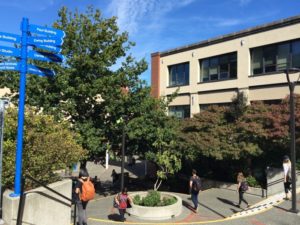This week will see British Columbia businesses and citiens adapting to the second phase of the provincial government’s plan to keep the province safe amidst a global pandemic. Although BC moving into an evolved form of physical distancing seems enticing, there’s been a clear over-estimation on behalf of the government of the public’s ability to adhere to the new plans and guidelines. The government has placed an abundance of trust onto the citizens of BC to correctly interpret their message of what it means to create “a new normal” for life while physical distancing.
BC’s phase-one plan to “flatten the curve” and keep infection rates low has proved to be very successful. Granted, there was a clear and dire message that translated easily into what actions the public needed to take: stay home. Things now seem especially promising for those of us living on Vancouver Island, where the numbers are looking promising. These combined factors are giving hope and security to many people after two months of uncertainty.

At first, I as well saw phase two as a timely and needed reprieve from life’s new realities, although in talking to and checking in with many of my 20-something friends, as well as my siblings, I realized that the government’s narrative of what phase two looks like is being significantly distorted in order to fit into the mold of each individual’s situation. It’s being applied to people’s lives as they see fit, which does not always follow the recommended rules. In the government’s phase two, there is no talk of close meetings with a few friends. There is no talk of hugs, handshakes, or carpooling to and from newly opened parks. Watching my friends, it seems as though the message was interpreted as something along the lines of, “Alright, you’ve done your part, so even though you can’t go back to work or school yet, movie nights in your basement sharing popcorn with six friends who you are ‘pretty sure’ don’t have COVID-19 are in the clear.”
Phase two holds important objectives within communities: helping small-business owners and easing burdens on parents juggling working from home and having their children at home, to name a few. The objective, however, was not to ease the emotional burden of not seeing your friends, boyfriend, girlfriend, or extended family members. Hopefully, online and properly distanced small meetings can tide us over for now. While this is a pressing burden for many, it is exactly the kind of social interaction that could send BC into a concerning trend. As the provincial government put it on their website, even an 80 percent return to “normal life” could throw all the work the province has done out the window. And while they state that a 30 percent to 60 percent return to social interactions and operations can maintain the flattened curve, it’s essential that the public understands what this 30-to-60 percent looks like.
Just as it’s easy to be disheartened when bombarded with terrible news day after day, it’s easy to slip back into old social habits when we are given positive and reaffirming news. I see the public responding in concerning ways to the introduction of this new phase. It’s an undeniable necessity to move forward within the government’s guidelines.
